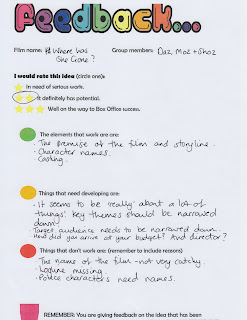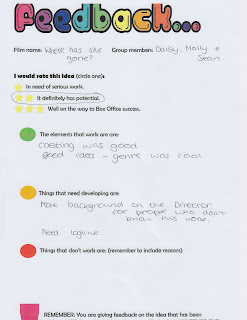
Romeo and Juliet –
title sequence (1995)
Genre - Greek
tragedy
The genre of this film is constructed
through the narrator of the film, who has taken upon the role of a news
presenter. The prologue of the play is used as the opening news story being
watched from a TV set. This immediately indicates the modern take this film has
on the play, however the prologue still remains the same old dialogue. In a typical news story, there is a picture
relating to the topic. In this news story, the picture is a ring broken and
underneath reads ‘starcrossed lovers.’ This also sets the genre of the film to
be romantic.
The fact that a news report is used also
foreshadows criminal activity or danger, as that what the news is usually
associated with. The music associates it closely to religion, with loud church
choir singing. The figure of Jesus is also shown throughout the title sequence,
and in between the Montague and Capulet buildings. This immediately shows there
is a direct link towards religion in the feud between both families. Short
clips of fighting scenes and what appears to be a war of somewhat are in the
title sequence, with the whirring of a helicopter and police sirens overhead.
In the title sequence, all of the main characters are introduced, apart from
Romeo and Juliet. This may be seen as an enigma of the film. The typography of the film is also very religion based, with
the use of a crucifix as the ‘+’
http://www.artofthetitle.com/title/william-shakespeares-romeo-juliet/




